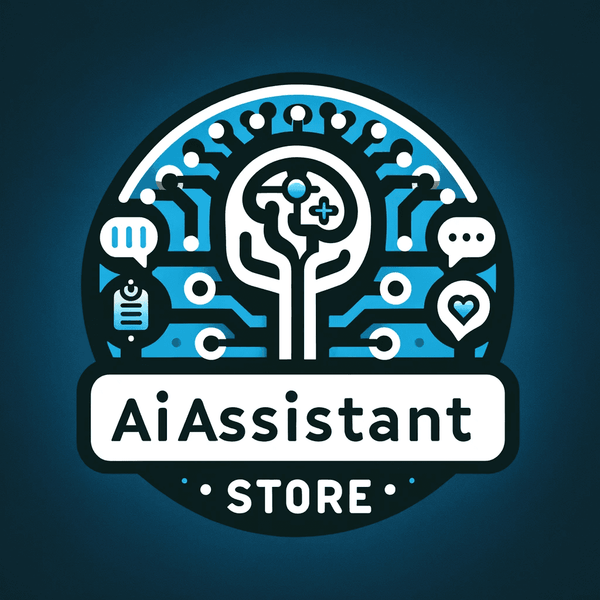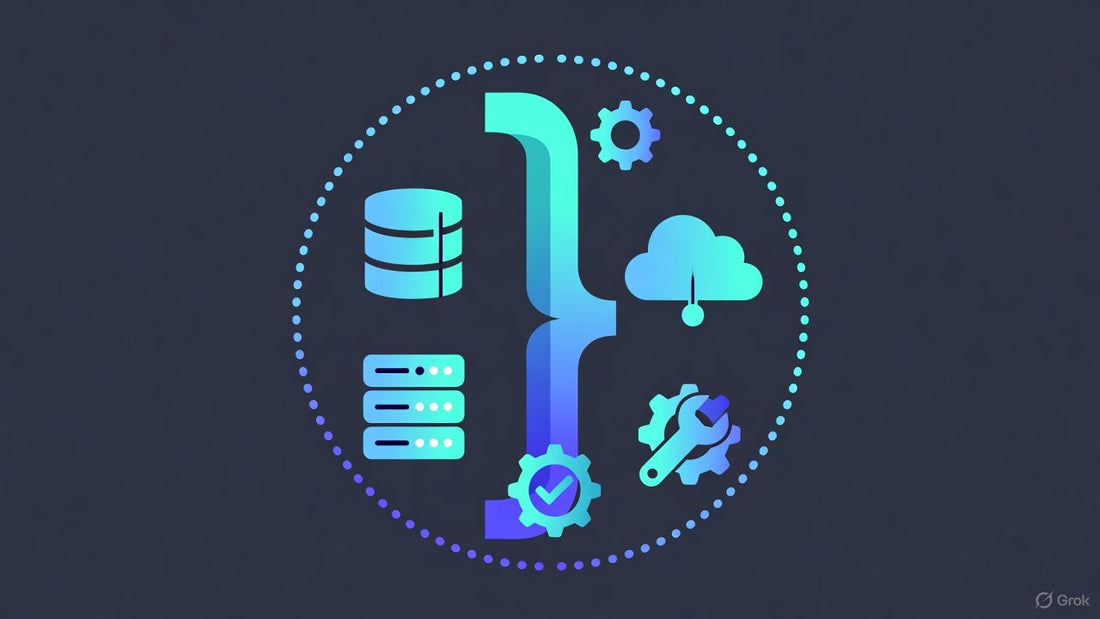If you’ve ever wondered what programming language is used for AI, you’re in good company. People imagine neon-lit labs and secret math - but the real answer is friendlier, a bit messy, and very human. Different languages shine at different stages: prototyping, training, optimization, serving, even running in a browser or on your phone. In this guide, we’ll skip the fluff and get practical so you can pick a stack without second-guessing every tiny decision. And yes, we’ll say what programming language is used for AI more than once because that’s the exact question on everyone’s mind. Let’s roll.
Articles you may like to read after this one:
🔗 Top 10 AI tools for developers
Boost productivity, code smarter, and accelerate development with top AI tools.
🔗 AI software development vs ordinary development
Understand key differences and learn how to start building with AI.
🔗 Will software engineers be replaced by AI?
Explore how AI impacts the future of software engineering careers.
“What programming language is used for AI?”
Short answer: the best language is the one that gets you from idea to reliable results with minimal drama. Longer answer:
-
Ecosystem depth - mature libraries, active community support, frameworks that just work.
-
Developer speed - concise syntax, readable code, batteries included.
-
Performance escape hatches - when you need raw speed, drop to C++ or GPU kernels without rewriting the planet.
-
Interoperability - clean APIs, ONNX or similar formats, easy deployment paths.
-
Target surface - runs on servers, mobile, web, and edge with minimal contortions.
-
Tooling reality - debuggers, profilers, notebooks, package managers, CI-the whole parade.
Let’s be honest: you’ll probably mix languages. It’s a kitchen, not a museum. 🍳
The quick verdict: your default starts with Python 🐍
Most folks start with Python for prototypes, research, fine-tuning, and even production pipelines because the ecosystem (e.g., PyTorch) is deep and well-maintained-and interoperability via ONNX makes hand-off to other runtimes straightforward [1][2]. For large-scale data prep and orchestration, teams often lean on Scala or Java with Apache Spark [3]. For lean, fast microservices, Go or Rust deliver sturdy, low-latency inference. And yes, you can run models in the browser using ONNX Runtime Web when it fits the product need [2].
So… what programming language is used for AI in practice? A friendly sandwich of Python for brains, C++/CUDA for brawn, and something like Go or Rust for the doorway where users actually walk through [1][2][4].
Comparison Table: languages for AI at a glance 📊
| Language | Audience | Price | Why it works | Ecosystem notes |
|---|---|---|---|---|
| Python | Researchers, data folks | Free | Huge libraries, fast prototyping | PyTorch, scikit-learn, JAX [1] |
| C++ | Performance engineers | Free | Low-level control, fast inference | TensorRT, custom ops, ONNX backends [4] |
| Rust | Systems devs | Free | Memory safety with speed-fewer footguns | Growing inference crates |
| Go | Platform teams | Free | Simple concurrency, deployable services | gRPC, small images, easy ops |
| Scala/Java | Data engineering | Free | Big-data pipelines, Spark MLlib | Spark, Kafka, JVM tooling [3] |
| TypeScript | Frontend, demos | Free | In-browser inference via ONNX Runtime Web | Web/WebGPU runtimes [2] |
| Swift | iOS apps | Free | Native on-device inference | Core ML (convert from ONNX/TF) |
| Kotlin/Java | Android apps | Free | Smooth Android deployment | TFLite/ONNX Runtime Mobile |
| R | Statisticians | Free | Clear stats workflow, reporting | caret, tidymodels |
| Julia | Numerical computing | Free | High performance with readable syntax | Flux.jl, MLJ.jl |
Yes, the table spacing is a bit quirky-like life. Also, Python isn’t a silver bullet; it’s just the tool you’ll reach for most often [1].
Deep Dive 1: Python for research, prototyping, and most training 🧪
Python’s superpower is ecosystem gravity. With PyTorch you get dynamic graphs, a clean imperative style, and an active community; crucially, you can hand models off to other runtimes through ONNX when it’s time to ship [1][2]. The kicker: when speed matters, Python doesn’t have to be slow-vectorize with NumPy, or write custom ops that drop into C++/CUDA paths exposed by your framework [4].
Quick anecdote: a computer-vision team prototyped defect detection in Python notebooks, validated on a week’s worth of images, exported to ONNX, then handed it to a Go service using an accelerated runtime-no retraining or rewrites. The research loop stayed nimble; production stayed boring (in the best way) [2].
Deep Dive 2: C++, CUDA, and TensorRT for raw speed 🏎️
Training large models happens on GPU-accelerated stacks, and performance-critical ops live in C++/CUDA. Optimized runtimes (e.g., TensorRT, ONNX Runtime with hardware execution providers) deliver big wins via fused kernels, mixed precision, and graph optimizations [2][4]. Start with profiling; only knit custom kernels where it truly hurts.
Deep Dive 3: Rust and Go for dependable, low-latency services 🧱
When ML meets production, the conversation shifts from F1 speed to minivans that never break down. Rust and Go shine here: strong performance, predictable memory profiles, and simple deployment. In practice, many teams train in Python, export to ONNX, and serve behind a Rust or Go API-clean separation of concerns, minimal cognitive load for ops [2].
Deep Dive 4: Scala and Java for data pipelines and feature stores 🏗️
AI doesn’t happen without good data. For large-scale ETL, streaming, and feature engineering, Scala or Java with Apache Spark remain workhorses, unifying batch and streaming under one roof and supporting multiple languages so teams can collaborate smoothly [3].
Deep Dive 5: TypeScript and AI in the browser 🌐
Running models in-browser isn’t a party trick anymore. ONNX Runtime Web can execute models client-side, enabling private-by-default inference for small demos and interactive widgets without server costs [2]. Great for rapid product iteration or embeddable experiences.
Deep Dive 6: Mobile AI with Swift, Kotlin, and portable formats 📱
On-device AI improves latency and privacy. A common path: train in Python, export to ONNX, convert for the target (e.g., Core ML or TFLite), and wire it up in Swift or Kotlin. The art is balancing model size, accuracy, and battery life; quantization and hardware-aware ops help [2][4].
The real-world stack: mix and match without shame 🧩
A typical AI system might look like this:
-
Model research - Python notebooks with PyTorch.
-
Data pipelines - Spark on Scala or PySpark for convenience, scheduled with Airflow.
-
Optimization - Export to ONNX; accelerate with TensorRT or ONNX Runtime EPs.
-
Serving - Rust or Go microservice with a thin gRPC/HTTP layer, autoscaled.
-
Clients - Web app in TypeScript; mobile apps in Swift or Kotlin.
-
Observability - metrics, structured logs, drift detection, and a dash of dashboards.
Does every project need all of that? Of course not. But having lanes mapped helps you know which turn to take next [2][3][4].
Common mistakes when choosing what programming language is used for AI 😬
-
Over-optimizing too early - write the prototype, prove the value, then chase nanoseconds.
-
Forgetting the deployment target - if it must run in browser or on-device, plan the toolchain on day one [2].
-
Ignoring data plumbing - a gorgeous model on sketchy features is like a mansion on sand [3].
-
Monolith thinking - you can keep Python for modeling and serve with Go or Rust via ONNX.
-
Chasing novelty - new frameworks are cool; reliability is cooler.
Quick picks by scenario 🧭
-
Starting from zero - Python with PyTorch. Add scikit-learn for classical ML.
-
Edge or latency-critical - Python to train; C++/CUDA plus TensorRT or ONNX Runtime for inference [2][4].
-
Big-data feature engineering - Spark with Scala or PySpark.
-
Web-first apps or interactive demos - TypeScript with ONNX Runtime Web [2].
-
iOS and Android shipping - Swift with a Core-ML-converted model or Kotlin with a TFLite/ONNX model [2].
-
Mission-critical services - Serve in Rust or Go; keep model artifacts portable via ONNX [2].
FAQ: so… what programming language is used for AI, again? ❓
-
What programming language is used for AI in research?
Python-then sometimes JAX or PyTorch-specific tooling, with C++/CUDA under the hood for speed [1][4]. -
What about production?
Train in Python, export with ONNX, serve via Rust/Go or C++ when shaving milliseconds matters [2][4]. -
Is JavaScript enough for AI?
For demos, interactive widgets, and some production inference via web runtimes, yes; for massive training, not really [2]. -
Is R outdated?
No. It’s fantastic for statistics, reporting, and certain ML workflows. -
Will Julia replace Python?
Maybe someday, maybe not. Adoption curves take time; use the tool that unblocks you today.
TL;DR🎯
-
Start in Python for speed and ecosystem comfort.
-
Use C++/CUDA and optimized runtimes when you need acceleration.
-
Serve with Rust or Go for low-latency stability.
-
Keep data pipelines sane with Scala/Java on Spark.
-
Don’t forget the browser and mobile paths when they’re part of the product story.
-
Above all, pick the combination that lowers friction from idea to impact. That’s the real answer to what programming language is used for AI-not a single language, but the right little orchestra. 🎻
References
-
Stack Overflow Developer Survey 2024 - language usage and ecosystem signals
https://survey.stackoverflow.co/2024/ -
ONNX Runtime (official docs) - cross-platform inference (cloud, edge, web, mobile), framework interoperability
https://onnxruntime.ai/docs/ -
Apache Spark (official site) - multi-language engine for data engineering/science and ML at scale
https://spark.apache.org/ -
NVIDIA CUDA Toolkit (official docs) - GPU-accelerated libraries, compilers, and tooling for C/C++ and deep learning stacks
https://docs.nvidia.com/cuda/ -
PyTorch (official site) - widely used deep learning framework for research and production
https://pytorch.org/

